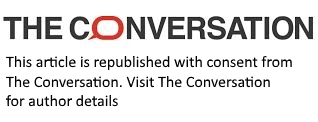A publishing insider’s debut novel includes a fiery author affair and a mystery manuscript. Is any of it real?
- Written by Sharon Mullins, Senior Tutor, Publishing and Editing, The University of Melbourne

Caro Llewellyn’s successful nonfiction publications include her 2019 Stella Prize shortlisted memoir Diving into Glass. That book begins and ends with her experience of multiple sclerosis, which was first diagnosed in 2009, while she was programming the PEN World Voices Festival in New York.
Her first foray into fiction draws on her extensive background in the literary sector, which includes working in publishing, directing the Sydney Writers Festival and being CEO of Melbourne’s The Wheeler Centre.
Love Unedited is set amid the book publishing scenes in Melbourne and New York, leaping back and forth between cities and throughout a period of about 25 years, from the late 1990s to today. It’s a world peopled with high-powered publishing executives, feted authors, eccentric literary agents and overworked editors.
Review: Love Unedited – Caro Llewellyn (Picador Australia)
The book’s title will immediately attract readers with an interest in publishing: a faux-glamorous world that continues to pique interest, inside and outside the industry. I’ve long worked in that world: first as a commissioning and managing editor in book publishing, then in the library sector, and now as a teacher of editing and publishing studies.
An editor and ‘her writer’
While the publishing world shapes and connects the novel’s dual narratives, it’s a subtle framing device, not a detailed exposition of the industry’s inner workings, as seen in novels like R.F. Kuang’s 2023 bestseller Yellowface.
Llewellyn’s story opens with Edna, a book editor based in contemporary Melbourne, reconnecting with her past paramour, an internationally renowned writer passing through town towards the end of his final book tour. We never know his name – he is only ever “the writer”, or “her writer”.
Along the way, Molly’s own romantic story unfolds, sometimes in sharp contrast to Edna’s destructive passions. (Remember the dating scene in the noughties? Rapid rounds of disappointing encounters that weren’t worth the repeated effort and hope; men who thought being a modern woman meant sex carried no more significance than a handshake. Perhaps not much has changed?)
At the same time, Molly learns there are common threads between Edna’s story and her own; tantalising hints along the way suggest there might be more than surface similarities between the two.
One thing that binds them is their experience of a passion (love? infatuation? obsession?) that gets its hooks in and won’t let go. If you know (or have been) that smart, capable woman who has, like Edna and Molly, “hung on to so little, so foolishly, for so long”, you might recognise this pattern – whether from a past relationship, failed relationship, half relationship or almost relationship.
Invisible women behind the scenes
I did wonder, though, about some aspects of the novel. Could someone really hide a long-running romance between a senior staffer and a big-name author in the small world of publishing? And sadly, I’ve never been to the kind of Park Avenue dinner-party launch event the novel describes, hosted by a wealthy literary agent, complete with butler, string quartet and crystal glasses overflowing with French wine. (Perhaps I don’t move in the right circles?)
What did ring true, from my humble experience, is the novel’s description of publishing as an industry with “so many women working silently, invisibly, behind the scenes”. Just recently, Van Badham published an article citing sobering Australian book industry statistics, specifically that 65% of authors and 84% of the workforce are women, with the vast majority earning wages below the national average.
In the novel, Molly notes: “Like many feminised cultural industries, they were constantly expected to do more with less.” Yet, we – the largely unseen cohort of women who make the publishing machine run – continue to serve and celebrate our art.
Readers will enjoy mentions of various books, shows and magazines that enrich the literary landscape of the novel and serve as both cultural and temporal markers (The New Yorker, Publishers Weekly, Sex and the City, Harry Potter, Charlotte Brontë, Emily Dickinson).
The metafictional elements are also intriguing: some readers may wonder if the book has a touch of roman à clef. There are a couple of details that seem to resemble Llewellyn’s own life, like Edna’s experience of autoimmune disease and Molly partnering with a chef. (Llewellyn lives with chef Maurizio Esposito, according to the novel’s biographical note.) Towards the end of the novel, Molly astutely observes: “Writers often said they could be more honest in fiction than in memoir.”
At times, I wanted more of Molly’s adventures as editor-cum-sleuth – at points it felt like the thread of the whodunit (or, rather, who-wrote-it) had been dropped. But the narrative does return to the chase as it works to its complex conclusion. In the end, you’ll want to go back and read it again.
Authors: Sharon Mullins, Senior Tutor, Publishing and Editing, The University of Melbourne





